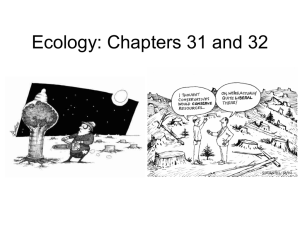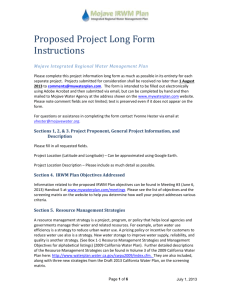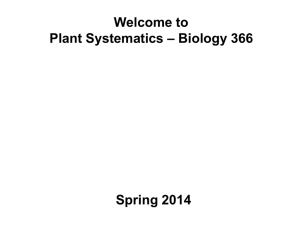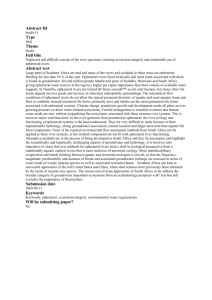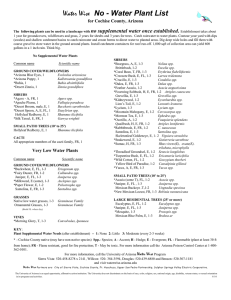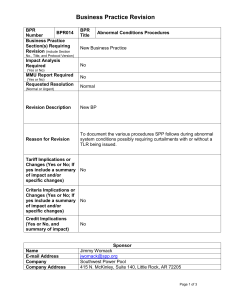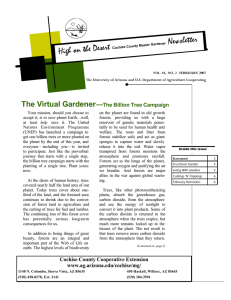Ephemeral vs. Permanent Wetlands vs. Species:
advertisement
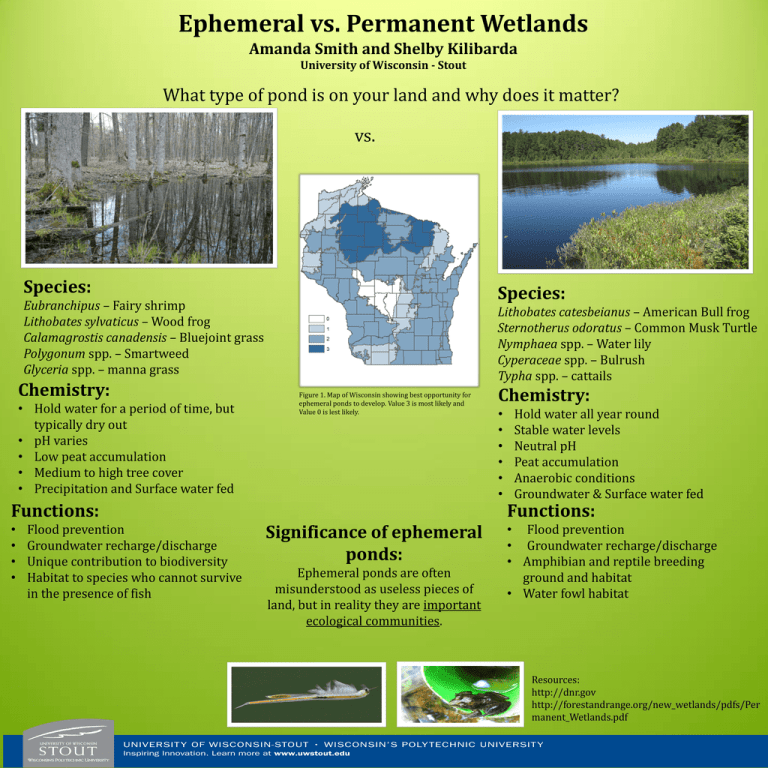
Ephemeral vs. Permanent Wetlands Amanda Smith and Shelby Kilibarda University of Wisconsin - Stout What type of pond is on your land and why does it matter? vs. Species: Species: Eubranchipus – Fairy shrimp Lithobates sylvaticus – Wood frog Calamagrostis canadensis – Bluejoint grass Polygonum spp. – Smartweed Glyceria spp. – manna grass Chemistry: • Hold water for a period of time, but typically dry out • pH varies • Low peat accumulation • Medium to high tree cover • Precipitation and Surface water fed Functions: • • • • Flood prevention Groundwater recharge/discharge Unique contribution to biodiversity Habitat to species who cannot survive in the presence of fish Lithobates catesbeianus – American Bull frog Sternotherus odoratus – Common Musk Turtle Nymphaea spp. – Water lily Cyperaceae spp. – Bulrush Typha spp. – cattails Figure 1. Map of Wisconsin showing best opportunity for ephemeral ponds to develop. Value 3 is most likely and Value 0 is lest likely. Significance of ephemeral ponds: Ephemeral ponds are often misunderstood as useless pieces of land, but in reality they are important ecological communities. Chemistry: • • • • • • Hold water all year round Stable water levels Neutral pH Peat accumulation Anaerobic conditions Groundwater & Surface water fed Functions: • Flood prevention • Groundwater recharge/discharge • Amphibian and reptile breeding ground and habitat • Water fowl habitat Resources: http://dnr.gov http://forestandrange.org/new_wetlands/pdfs/Per manent_Wetlands.pdf

